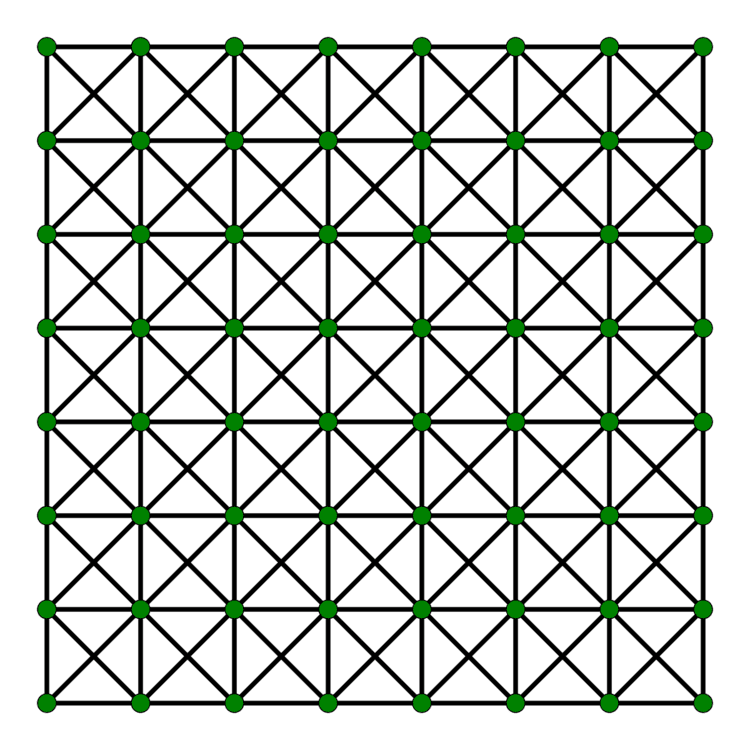Vertices nm | Edges 4nm-3(n+m)+2 | |
 | ||
In graph theory, a king's graph is a graph that represents all legal moves of the king chess piece on a chessboard where each vertex represents a square on a chessboard and each edge is a legal move. More specifically, an
For a
The neighbourhood of a vertex in the king's graph corresponds to the Moore neighborhood for cellular automata. A generalization of the king's graph, called a kinggraph, is formed from a squaregraph (a planar graph in which each bounded face is a quadrilateral and each interior vertex has at least four neighbors) by adding the two diagonals of every quadrilateral face of the squaregraph.
